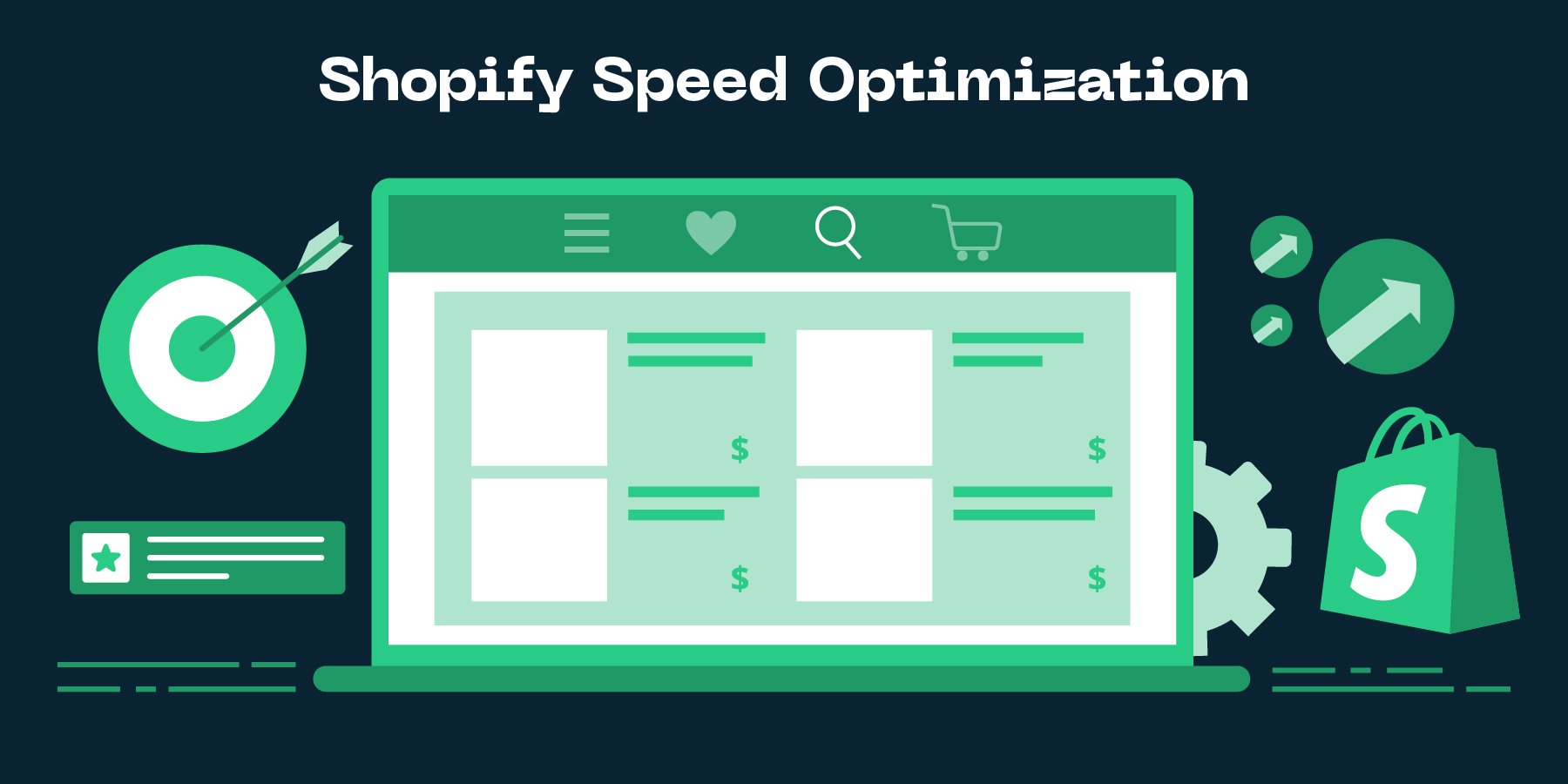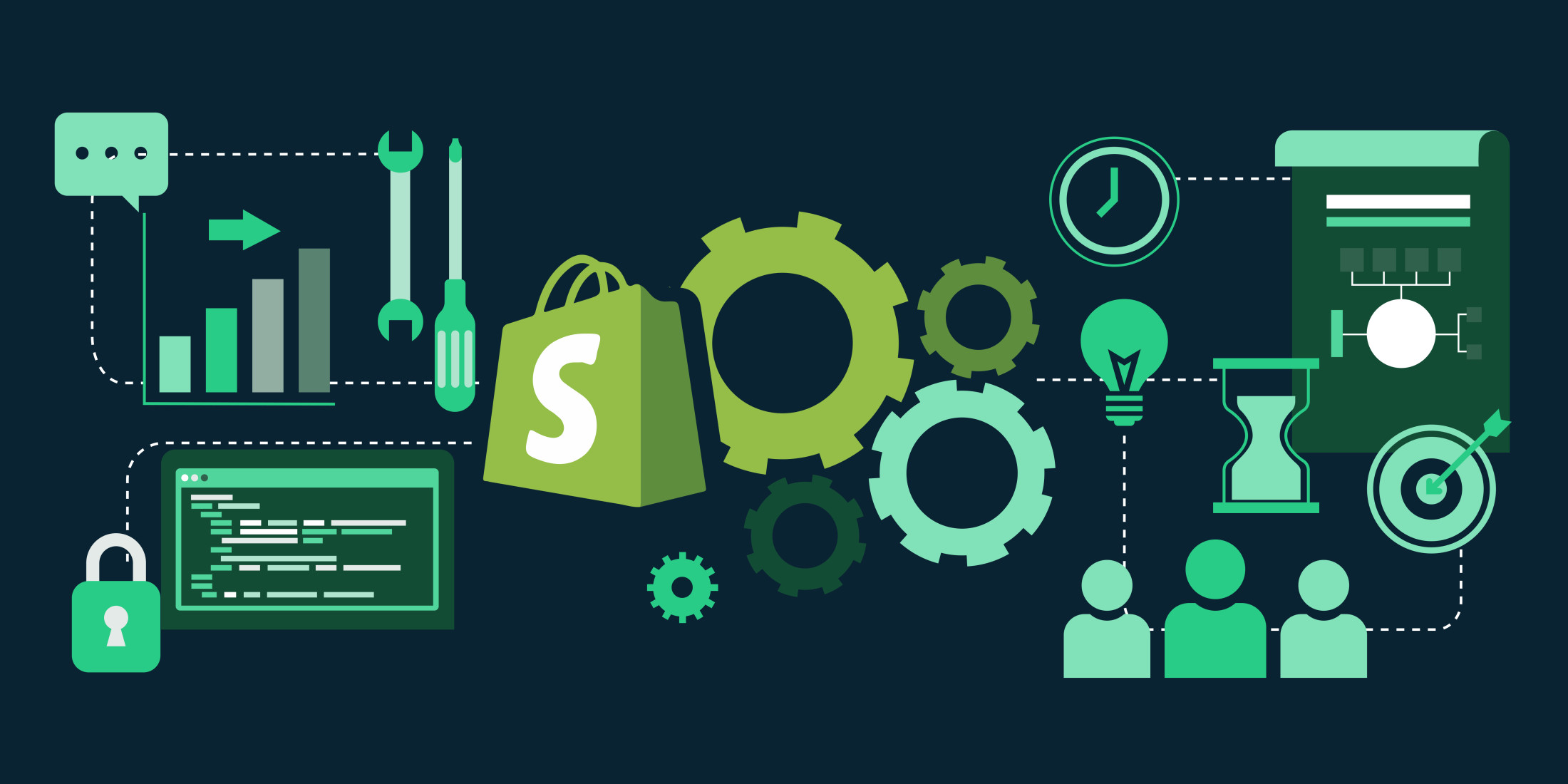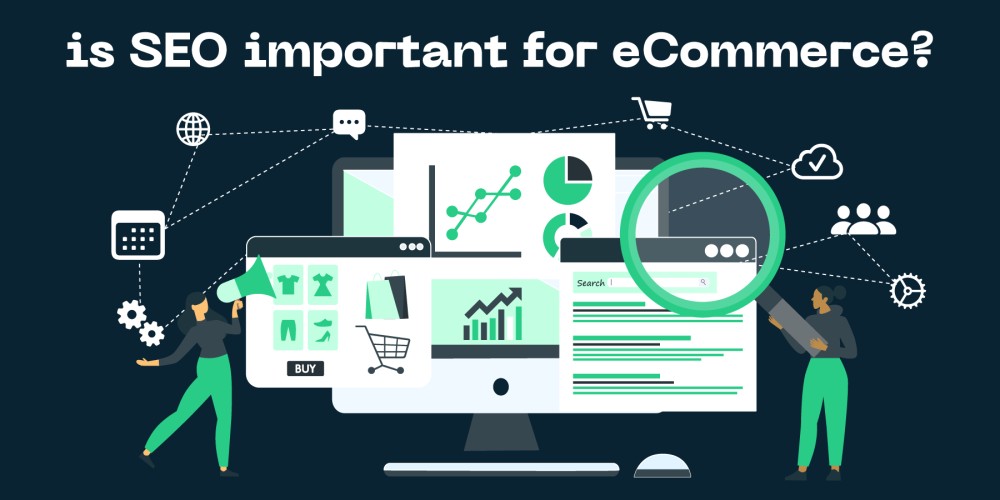Shopify Speed Optimization: Tips for Shopify Website Optimization

Key Takeaways
- Site speed directly impacts your bottom line. Even a 0.1-second improvement can drive an 8.4% lift in conversions — while delays quietly kill revenue and growth.
- Optimization starts with foundational decisions. Lightweight themes, compressed images, minimal apps, and efficient scripts lay the groundwork for scalable success.
- Continuous monitoring is essential. Speed optimization isn’t a one-time project — proactive auditing with tools like Google PageSpeed Insights and ConvertMate ensures consistent performance.
- Faster experiences drive stronger customer loyalty and better SEO. Investing in speed now builds a sustainable competitive advantage across acquisition, retention, and brand trust.
In today’s eCommerce environment, speed isn’t just a technical metric — it’s a competitive weapon. Your Shopify store’s loading time directly impacts conversion rates, search visibility, and customer trust. Even slight delays create friction, causing customers to abandon purchases and eroding brand credibility.
The measurable impact is significant:
A mere 0.1-second improvement in site speed can boost conversion rates by 8.4%, while a one-second delay can decrease mobile conversions by as much as 27%.
In a market where acquisition costs are rising and user expectations are higher than ever, speed optimization isn't optional — it's foundational to sustainable growth.
Why Site Speed Directly Impacts Revenue and Growth
Fast-loading Shopify sites consistently outperform slower competitors across three critical growth levers:
- Higher Conversion Rates: Every second counts. Studies show that a 0.1-second increase in site speed leads to an 8.4% lift in conversions. Faster experiences drive more completed checkouts and repeat customers.
- Stronger Mobile Performance: With mobile commerce dominating, site speed on handheld devices is mission-critical. A one-second improvement in mobile site load times can lead to a 27% increase in mobile conversions.
- Improved SEO Rankings: Google prioritizes websites that load quickly, particularly on mobile. A slow site not only hurts user experience but also drags down your search engine rankings, reducing organic traffic and increasing reliance on paid channels.
Key Strategies for Shopify Speed Optimization
Optimizing Shopify site speed isn't about chasing minor tweaks — it's about implementing high-leverage strategies that deliver compounding returns across conversions, SEO, and customer satisfaction.
Here’s where to focus:
Choose a Fast, Lightweight Theme
Theme choice sets the foundation for performance. Prioritize themes engineered for speed, like Dawn or Turbo, which minimize code bloat and maximize responsiveness.
Avoid themes heavily dependent on third-party apps or excessive customizations, which can introduce unnecessary scripts and degrade site performance.
Optimize Images for Web Performance
Large image files are one of the biggest speed killers. To mitigate them:
- Compress images using tools like TinyJPG or TinyPNG without sacrificing quality.
- Utilize WebP formats, which offer superior compression and faster loading.
- Implement lazy loading to defer the loading of offscreen images, ensuring critical content loads first.
Smart image management delivers faster experiences without compromising visual quality.
Minimize App Usage and Script Load
Every app installed on your Shopify store adds scripts — and load time.
- Conduct regular app audits and remove any non-essential or redundant apps.
- Where possible, replace apps with lightweight custom code tailored to your exact needs. Custom implementations are often more efficient and scalable.
Reduce HTTP Requests and Script Overhead
Each external request delays your page load. To optimize:
- Consolidate CSS and JavaScript files to reduce the number of server requests.
- Use Google Tag Manager to manage tracking scripts efficiently, minimizing overhead without sacrificing marketing visibility.
Streamlining requests improves both speed and stability.
Optimize Fonts for Faster Rendering
Fonts often go overlooked — but they're a hidden drag on performance. To optimize:
- Default to system fonts whenever possible to eliminate download delays.
- Limit the number of font variations (styles, weights) to two or three to minimize file sizes.
Your goal is to maintain clean, consistent typography without compromising speed.
Leverage Browser Caching for Repeat Visitors
Returning visitors shouldn’t be forced to reload the same resources. To optimize caching:
- Enable browser caching to allow static resources (like logos, style sheets) to load from local storage.
- Set appropriate cache expiration times based on content type to balance performance and freshness.
Efficient caching transforms user experience and reduces server load.
Improve Core Web Vitals (LCP, FID, CLS)
Google’s Core Web Vitals are now central to search rankings — and to customer satisfaction.
Focus on:
- Largest Contentful Paint (LCP): Optimize the largest visible elements for faster rendering.
- First Input Delay (FID): Minimize JavaScript execution to ensure quicker interactivity.
- Cumulative Layout Shift (CLS): Pre-define image dimensions and stabilize assets to avoid sudden shifts as content loads.
Core Web Vitals improvements strengthen both SEO and customer loyalty.
Utilize a Content Delivery Network (CDN)
Speed isn’t just about server response — it's also about proximity. Using a Content Delivery Network (CDN) ensures users worldwide experience faster load times.
- Shopify’s built-in Fastly CDN is active by default.
- For stores with advanced global needs, additional CDN layers can be considered for further latency reduction.
Regularly Audit and Monitor Site Performance
Optimization isn't a one-time project — it's an ongoing discipline. Best practices include:
- Running audits with Google PageSpeed Insights and ConvertMate’s free SEO Audit Tool weekly.
- Addressing emerging bottlenecks before they escalate into customer experience issues.
Proactive monitoring ensures your store remains fast, reliable, and ready for scale.
Streamline Tracking Scripts with Google Tag Manager
Multiple tracking scripts can bog down your load times. Google Tag Manager simplifies and consolidates tracking — reducing the number of simultaneous requests at load time.
This streamlining not only accelerates your site but also simplifies your marketing stack management.
Frequently Asked Questions
1. Why is Shopify site speed so important for conversions?
Faster sites create seamless customer experiences, reducing friction at every stage of the buyer journey. Even minor delays can cause abandonment, while faster load times dramatically increase completed purchases.
2. How much impact can small improvements in speed really have?
Studies show a 0.1-second improvement in site speed can increase conversion rates by 8.4%, and a one-second delay can decrease mobile conversions by up to 27%. Small improvements compound into major revenue gains.
3. What are the easiest first steps to improve Shopify speed?
Start by selecting a performance-optimized theme (like Dawn or Turbo), compressing images, and auditing your installed apps to remove unnecessary scripts.
4. How often should I audit my Shopify store’s performance?
At minimum, run performance audits monthly. Ideally, integrate weekly checks using tools like Google PageSpeed Insights or ConvertMate’s SEO Audit to catch issues early.
5. Is using a Content Delivery Network (CDN) necessary if I’m using Shopify?
Shopify includes a built-in CDN (Fastly) by default, which is sufficient for most stores. However, businesses with a global customer base may benefit from layering additional CDN services for even faster localized performance.
6. How do too many apps slow down my Shopify store?
Every installed app can add background scripts that load with each page view. Over time, excessive apps create script overload, increasing HTTP requests and dragging down site speed.
7. What are Core Web Vitals, and why do they matter?
Core Web Vitals — Largest Contentful Paint (LCP), First Input Delay (FID), and Cumulative Layout Shift (CLS) — measure real-world user experience. Strong scores improve SEO rankings and deliver smoother, more reliable customer interactions.
Summary
Speed is no longer a backend detail — it’s a growth multiplier.
A fast Shopify site delivers:
- More Revenue: Higher conversion rates at every stage of the funnel
- Stronger SEO Performance: Better rankings, lower acquisition costs
- Superior Customer Experience: Frictionless journeys that build loyalty and repeat business
Yet the cost of inaction is often underestimated. A slow site quietly erodes performance across the board — reducing conversions, increasing bounce rates, weakening search rankings, and damaging brand reputation over time. Left unchecked, small speed issues compound into missed revenue targets and higher operational costs.
In a market where attention is scarce and competition is relentless, site speed is one of the few controllable advantages left.
Optimizing your Shopify store for speed today isn’t just about technical excellence — it’s about future-proofing your growth.


